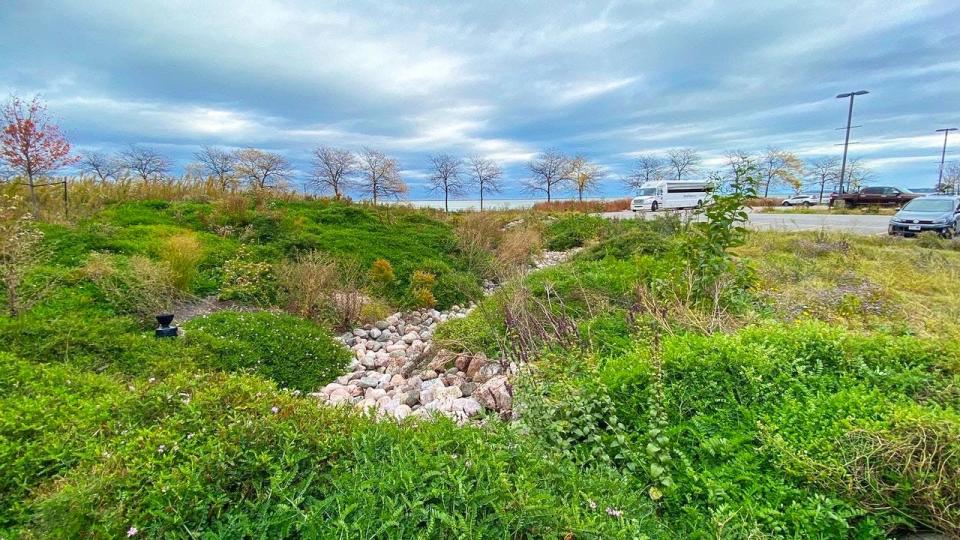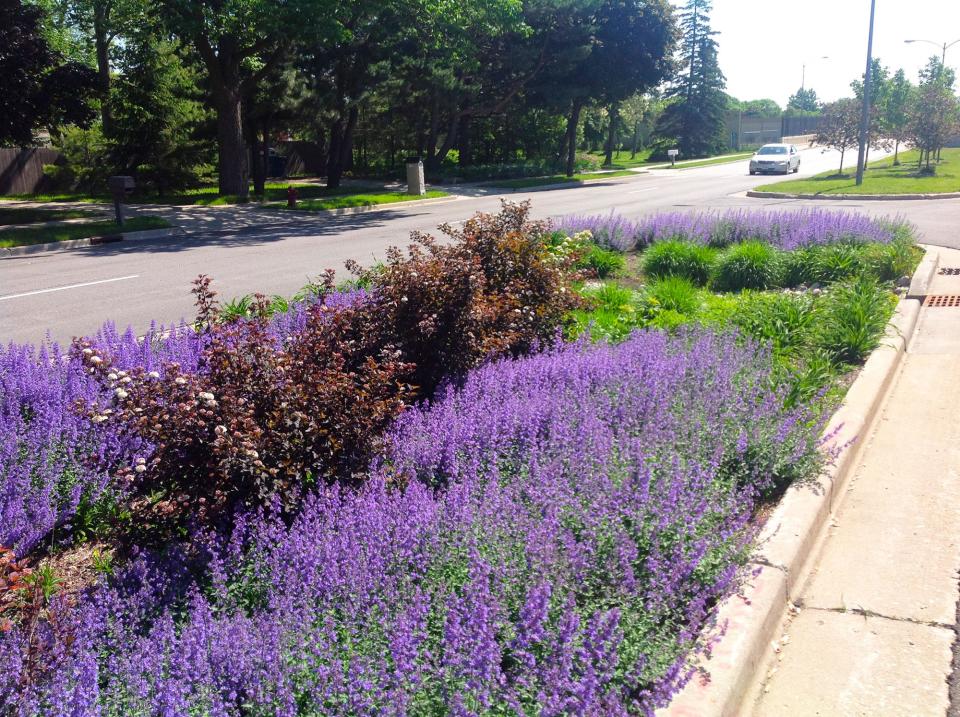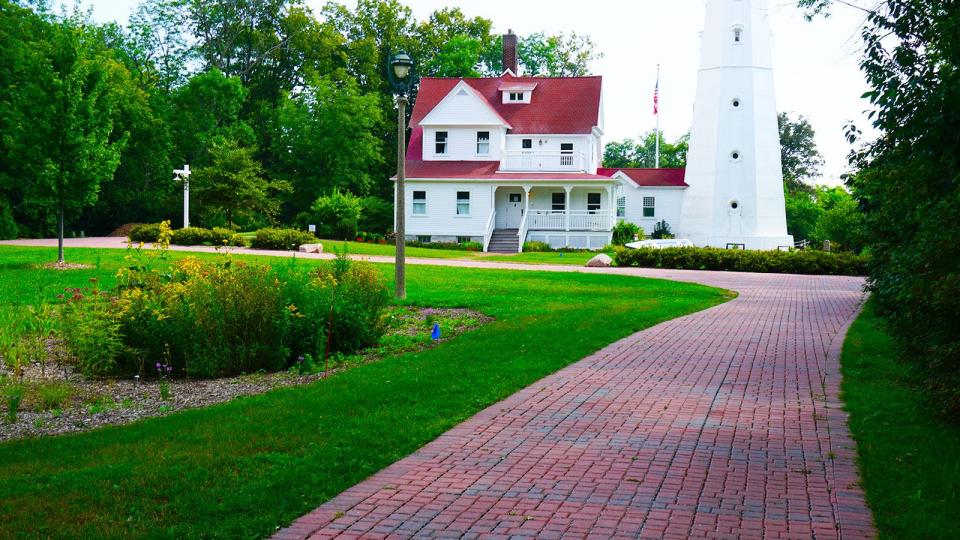What is the green infrastructure in Milwaukee, and how does it work?
As a city that was built on the confluence of three rivers that feed Lake Michigan, water is a big part of life in Milwaukee. And keeping waterways clean and healthy means finding diverse, innovative ways manage rainwater.
Green infrastructure is one such way, helping manage where water goes to reduce the impacts of weather.
To date, the Milwaukee Metropolitan Sewerage District, along with its partners, have installed green infrastructure that can store up to 138 million gallons of rainwater per storm across the 28 communities it serves, according to Bill Graffin, public information manager at the sewerage district. By 2035, the sewerage district hopes to store 740 million gallons, he said.
Not only does green infrastructure help manage stormwater, but it also makes communities more attractive, cools them down and improves people's health by reducing air pollution.
Here is how green infrastructure is protecting Milwaukee's waterways and the different kinds of green infrastructure you can find around the city.
More: Once a brownfield, this site on Milwaukee's north side has become an environmental wonderland
Green infrastructure helps manage where water goes
Green infrastructure helps nature do its job by absorbing and storing rain and melting snow. It protects communities against flooding and excessive heat as well as improves air, soil and water quality. Building with nature can keep nearby waterways clean by reducing runoff, sewer overflows and erosion while better adapting to a changing climate.
Green infrastructure is also referred to as low-impact development, environmental site design and low-carbon infrastructure. There is also "gray infrastructure," which includes manmade structures, such as treatment facilities, sewer and water pipes, stormwater systems.

More: Interactive map pinpoints Milwaukee areas most at risk for flooding, related health risks
Rain barrels store rainfall for later use
Rain barrels collect and store rainfall so it can be used later to water gardens, lawns or indoor plants. The barrels are typically placed under downspouts and collect water runoff from roofs, reducing stormwater run off into nearby waterways.
Rain gardens, stormwater trees soak up stormwater
Both rain gardens and stormwater trees capture stormwater. Rain gardens are usually planted in low-lying areas so stormwater can naturally flow into them. When the water enters the garden it slowly seeps into the soil and is soaked up by the roots of plants.
Stormwater trees soak up rainwater via the plant roots, which is then stored in the branches and leaves until the plant transpires ? when the plant exhales water vapor into the air. Trees also improve air quality and fight climate change by soaking up carbon dioxide, a greenhouse gas.
Bioswales slow down stormwater
A bioswale is a long channel or trench that uses native plants as well as soil, mulch and stones to slow rainfall down and filter out pollutants before they head downstream. Bioswales can also help recharge groundwater and clean it up before it gets there.
While rain gardens capture and store rainfall in a bowl shape, bioswales have a more complicated design, using channels to move rainwater to another place. Bioswales also capture runoff from larger impermeable surfaces, like streets and parking lots.

Green roofs help save energy
Native plants can be grown on top of buildings to create a green or "living" roof. Green roofs have many layers that include plants, soil and watertight membranes that absorb that is later released through plant transpiration.
Green roofs can also help reduce energy use by removing heat from the air and acting as insulators for buildings. They can also help minimize the urban heat island effect, where cities experience hotter temperatures than surrounding areas.
Porous pavement minimizes flood risk
Opposed to impervious surfaces, like roads and parking lots, porous pavement allows runoff to soak into the pavement into deeper stone layers below. The water can then slowly enter the ground and be collected by stormwater sewers or stored for later use. The pavement helps reduce pooling and flooding during major storms.

Improving soil health with amendments, native plants
Maintaining soil health can improve the soil's ability to act like a sponge, reducing runoff and erosion. One way to improve soil health is to have thicker, deeper root systems that allow water to infiltrate into deeper layers of the soil. Extensive root systems also stabilize and hold the soil together.
Spreading compost or organic material onto a lawn can create healthier grass with thicker root systems. Thick, deep root systems help water infiltrate into deeper layers of the soil. Allowing grass to grow taller can also help.
Landscaping with native plants, which often have deeper and more extensive root systems, can help absorb stormwater and create healthy soils. Native plants also provide a number of other benefits. Native landscaping requires less water and fertilizers, and reduces the need to mow. These plants are also more likely to handle extreme weather conditions, like drought, and provide habitat for birds, bees and other pollinators.
The Wisconsin Department of Natural Resources keeps a list of native plant nurseries across the state and announces when native plant sales happen.
More: Want your yard to withstand extreme weather in Wisconsin? Plant native plants
More: Here are the best native plants to put in your yard in Milwaukee
There are successful green infrastructure projects throughout Milwaukee
Here are examples of green infrastructure you can find in the area:
Rain barrel: A thousand gallon cistern is in Paliafito Eco-Arts Park, 315 W. Walker St.
Rain garden: The rear parking lot of the West Allis City Hall, 7525 W. Greenfield Ave., and at Bradford Beach.
Stormwater trees: The parking lot area of Coakley Brothers at 400 S. Fifth St., Milwaukee. You can also see a project currently underway by the sewerage district to capture runoff from Interstate 94 near the intersection of West Lincoln Avenue and South Fifth Street where the Lincoln Village and Baran Park neighborhoods meet.
Bioswale: The Best Place banquet hall on the old Pabst Brewery campus, at 917 W. Juneau Ave., Milwaukee.
Green roofs: The Brix Apartment Lofts, at 408 W. Florida St., and on the Milwaukee Public Museum at 800 W. Wells St.
Porous pavement: In the parking area at Sid Grinkler Restoration at 1719 N. Vel R. Phillips Ave., Milwaukee.
Native landscape: The War Memorial Center next to the northeast parking area at 750 N. Lincoln Memorial Drive in Milwaukee.
If you want to learn more about green infrastructure, you can explore successful projects by businesses, organizations and communities on the sewerage district's website.
More: Climate change brings more floods. Which Great Lakes states are best prepared? Hint: Not Wisconsin.
Caitlin Looby is a Report for America corps member who writes about the environment and the Great Lakes. Reach her at [email protected] or follow her on Twitter @caitlooby.
This article originally appeared on Milwaukee Journal Sentinel: What is green infrastructure in Wisconsin, and where can I find it?
Solve the daily Crossword

